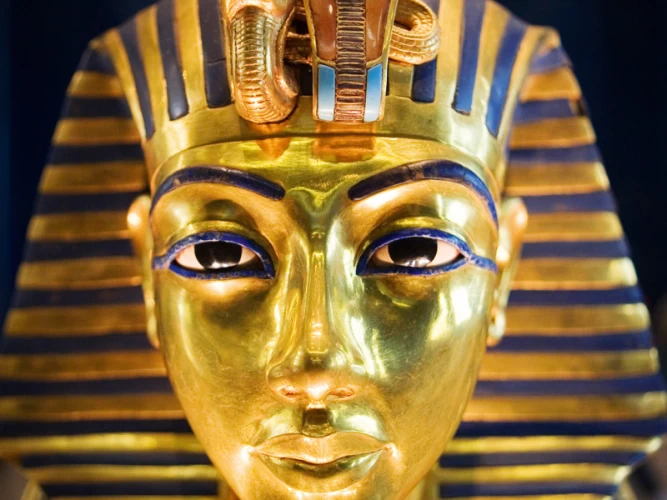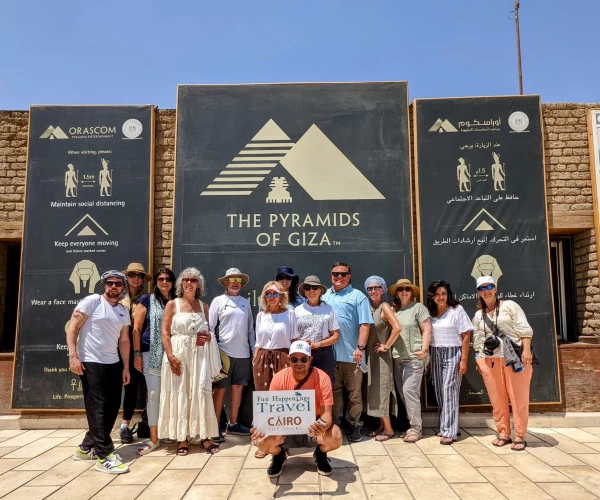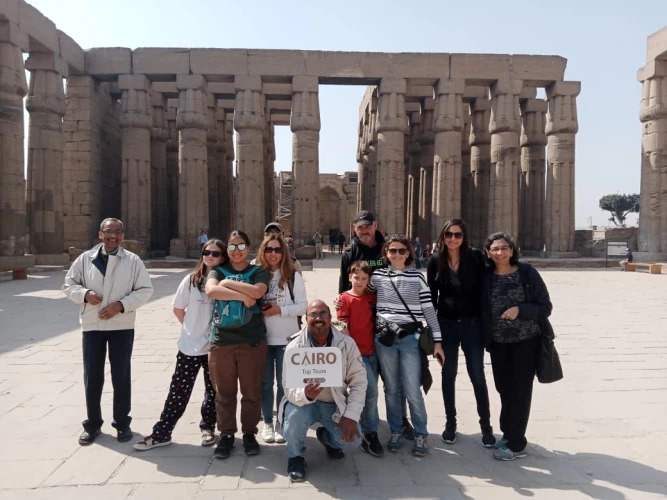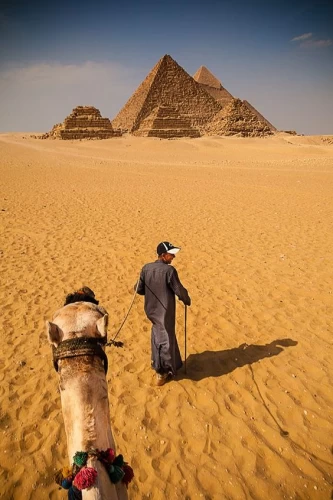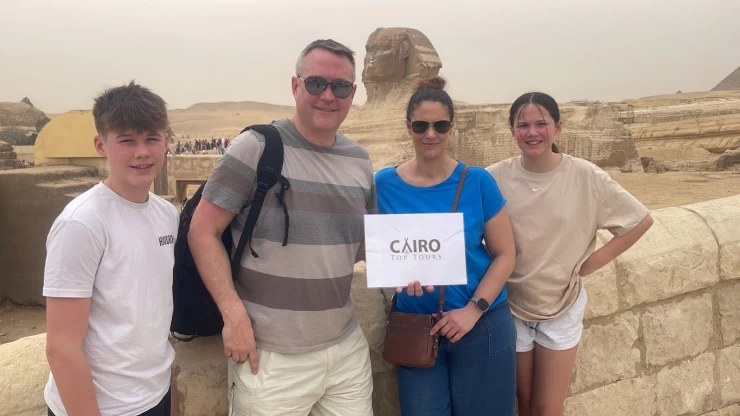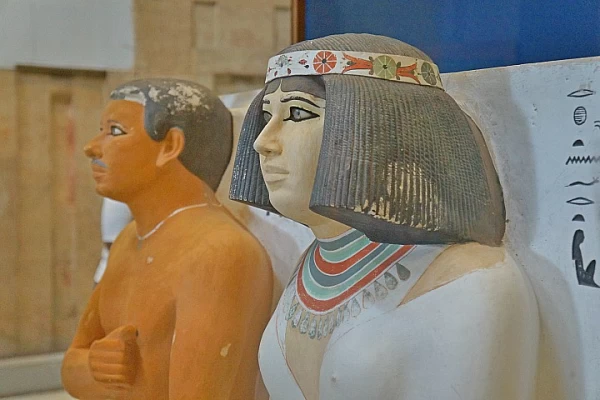
The Solar Boat Museum in Egypt
Giza Solar boat museum
Sail to the Sun at the Cheops Boat Museum
Egypt is a land brimming with ancient temples, ruins, tombs, and historical sites dating back to the Egyptian era. All of this serves as a testament to this civilization's monumental accomplishments and foresight. The Khufu Ship Museum, also known as the Solar Boat Museum, is a little-known gem in Egyptian archaeology.
The Khufu Ship Museum not only houses the iconic Khufu ship, but also has a unique position next to the Pyramid of Khufu, which is the largest of the three Pyramids of Giza in terms of scale. Although it is a separate museum with a small admission fee, it is well worth a visit due to its sheer scale, history, and rebuilding tale.
Solar Boats In Ancient Egypt
Ancient Egyptians used cedarwood to build their solar vessels, which were huge ships. During Pharaonic times, they were used in religious ceremonies. Historians and archaeologists have been debating the exact historical name and intent of these boats for years. These boats, on the other hand, were most likely designed for the King's and possibly some of his royal family's funerary rituals.
Khufu Ship Museum
When King Cheops died and his body was mummified, the priests placed his body in this solar boat to travel to Heliopolis and other cities before landing in his royal necropolis in Giza. The Solar Boat Museum was built around 1985 to house the boat that was placed there when King Cheops passed away and his body was mummified. The priests then dismantled the solar boat into smaller parts, which they buried near the pyramids and dubbed the Boat of Cheops.

King Cheops | King Khufu
Location of the Khufu Ship Museum
The Museum is located on the Giza Plateau, specifically near the Khufu Pyramid, and is just a 30-minute drive from Cairo's city center. The Khufu Ship Museum is located within the entrance to Giza's Three Pyramids, with guides available to accompany visitors to the entrance and within the pyramids if required.
The Khufu Ship Museum has a small gallery of displayed objects, including the reassembled Khufu Ship, a maquette Khufu Solar ship, and photographs documenting the reassembling and discovery of the Khufu ship. The Museum's three-story structure and construction methods enable visitors to get a full view of Khufu's solar ship from every perspective.
Relocation of the Solar Boat
The Egyptian Antiquities Association has agreed to carry out a project to protect and conserve the solar boat museum in Giza over the last few years.
According to Zahi Hawas, the president of the Egyptian Supreme Council of Antiquities, all museums around the world have small narrow windows to prevent harmful sun rays from entering. The Solar Boat Museum, on the other hand, is unique in that it only has one display, the boat, and the museum consists of a panoramic view of the boat that is made up of large glass panels, exposing the boat to a variety of factors that might damage it.
This is why Egyptian authorities insisted on relocating the solar boat from its original position within its museum near the Giza Pyramids to the current Egyptian Museum of Antiquities near Al Remaya Square in Giza. With the assistance of UNESCO, this phase was completed.
Khufu ship
According to Zahi Hawas, the solar boat's relocation was motivated by the fact that it was subjected to a variety of pollutants. This is in addition to the fact that the solar boat's value and significance would grow if it were to be included in the New Grand Museum of Egyptian Antiquities. The solar boat would have a huge hall constructed especially for it in the New Grand Museum of Egyptian Antiquities, according to Hawas.
This situation would undoubtedly highlight the significance of the solar sail, which is considered one of the few surviving examples of ancient Egyptian architecture.
How Were Solar Boats Discovered?
The discovery of the Khufu Ship in 1954 was an accidental discovery, which could come as a surprise. The Khufu ship, one of two rediscovered by Kamal El-Mallakh, is the world's oldest intact ship, dating from the 4th Dynasty around 2500 BC and constructed for King Pharaoh Khufu. During the cleaning of the Great Pyramids, the solar ship was discovered in the midst of archaeological excavations in the Giza region.
Khufu Solar Boat
After excavating to the very bottom of a massive limestone wall, 42 pieces of rock were found. The Khufu Solar Boat was discovered, but it was broken into thousands of pieces.
It was discovered in five pits near the Great Pyramid of Khufu and painstakingly reassembled from 1200 pieces of cedar wood by chief Egyptian restorer Ahmed Youssef Moustafa, who spent 14 years gathering the expertise required to restore the boat to its former glory.
Traveling to boatyards in Old Cairo, El Maadi, and Alexandria and watching shipbuilders at work, as well as examining ancient inscriptions on tomb walls and the many smaller model ships in the tomb. The ship is thought to have been made out of over a thousand pieces of wood, kept together by sycamore pegs and half-grass ropes.
The purpose of the Khufu Ship
Throughout ancient Egypt's history, ships similar to the Khufu ship were used for a variety of purposes, one of which was carrying construction materials up and down the Nile. The Khufu ship's exact role is uncertain, but it is classified as a "Solar Barge" in general. Traditionally, such vessels were used for unethical behavior.
As they ascended the resurrected king to the Falcon-headed sun god Ra, the ancient Egyptians believed. The Khufu ship is thought to have been used by the late Gret king as a funerary barge to carry his embalmed body from Memphis to his final resting place in Giza. Another hypothesis is that Khufu used it as a personal pilgrimage ship for the Great Pharaoh. The fact that the ship shows signs of having been in contact with or used in water lends credence to both hypotheses.
There are some really interesting things to learn about Al-Ismailia Governorate Egypt. Some people visited Egypt and learned a lot about it.
Latest Articles
Admin
Seabourn Sojourn Cruise Stops in Safaga Port
The Seabourn Sojourn, the flagship vessel of Seabourn Cruise Line's ultra-luxury fleet, was built in 2008 at the T. Mariotti shipyard in Genoa, Italy. Measuring 198 metres, it can accommodate up to 450 guests in its 225 spacious all-suite staterooms.
Admin
Norwegian Sky Cruise Stops in Safaga Port
Norwegian Cruise Line operates a cruise ship called the Norwegian Sky. It was constructed in 1999 and can accommodate 2,004 passengers in addition to 878 crew members. The ship has several dining establishments, lounges and bars, a spa and fitness center, swimming pools, and a number of entertainment areas.
Admin
Explora II Cruise Stops in Safaga Port
Explora II, the second vessel in the Explora Journeys fleet, sets sail in 2024 to redefine luxury cruising. With 461 ocean-front suites, 9 culinary experiences, and 4 pools, this haven of sophistication and sustainability promises an unforgettable "Ocean State of Mind" journey to inspiring destinations.
Admin
Mein Schiff 6 Cruise Stops in Safaga Port
The Mein Schiff 6 is the latest cruise ship in the renowned TUI Cruises fleet, offering passengers a luxurious and sophisticated cruise experience. At 315 metres long, this floating resort features a range of dining options, entertainment, and recreational facilities, including a spa, fitness centre, and sports amenities.
Admin
Mein Schiff 4 Cruise Stops in Safaga Port
When the Mein Schiff 4 cruise ship docks in Safaga, Egypt, passengers are granted access to a realm of ancient wonders. Aboard this state-of-the-art vessel, guests can embark on meticulously curated shore excursions that showcase the region's most iconic landmarks, including the Giza Pyramids, the enigmatic Sphinx, and the remarkable tombs and temples of the Valley of the Kings in Luxor.
Admin
MS Europa Cruise Stops in Safaga Port
The Silver Moon, Silversea's latest flagship, is a luxury cruise ship that offers an exceptional travel experience for Venezuelans exploring Egypt. With a capacity of 596 guests and an impressive 40,700 gross tonnes, the Silver Moon maintains the small-ship intimacy and spacious all-suite accommodations that are the hallmarks of the Silversea brand.






